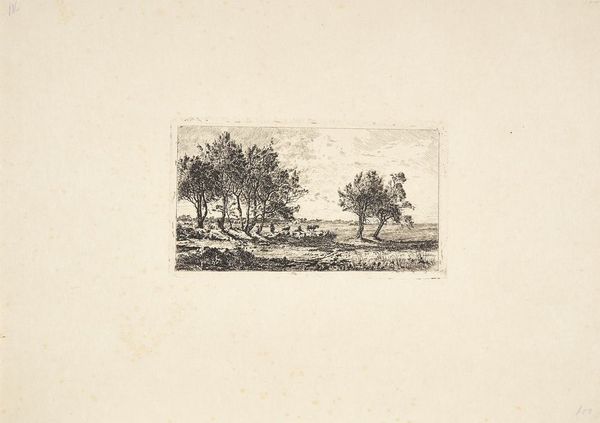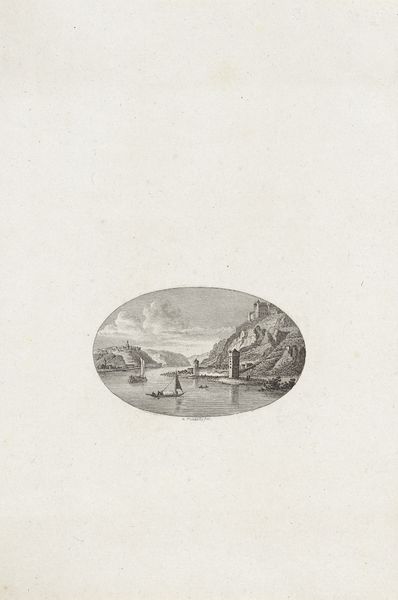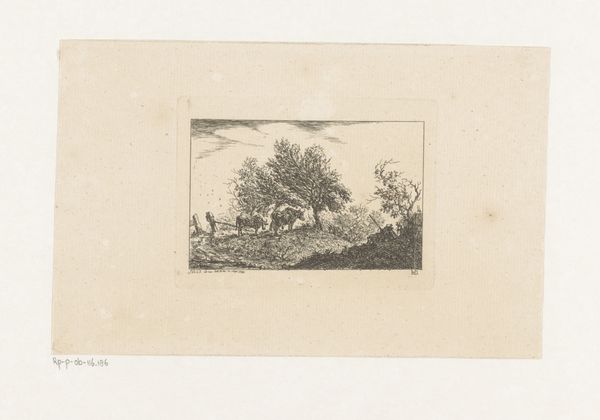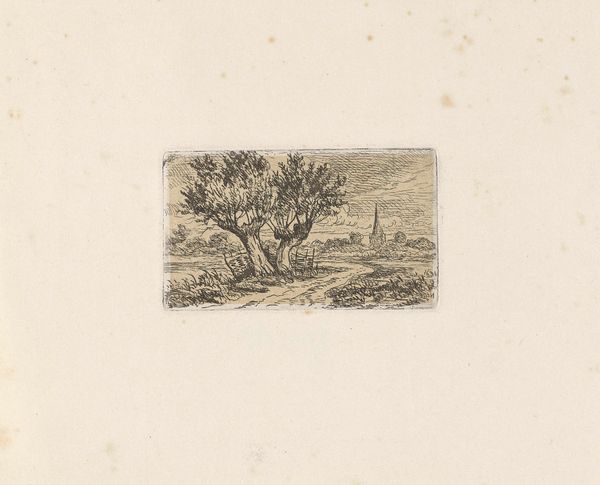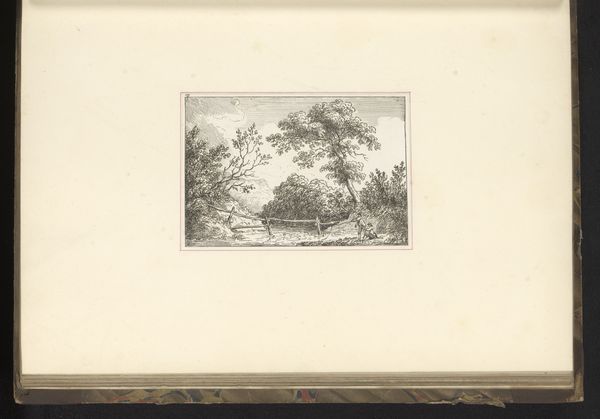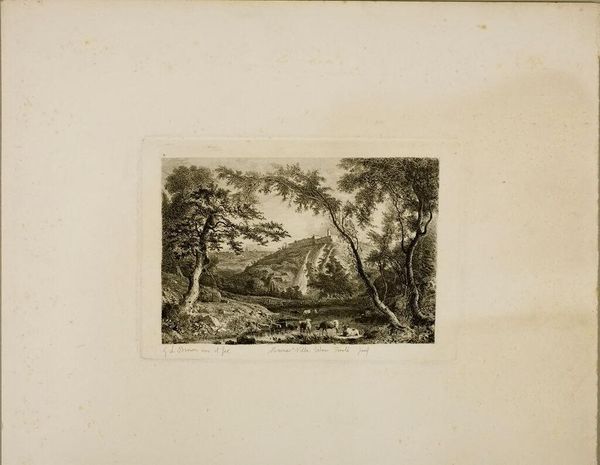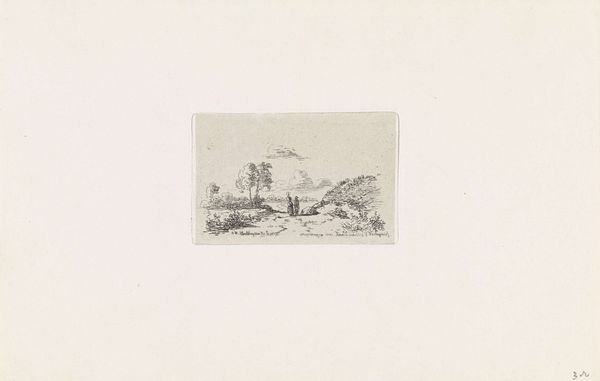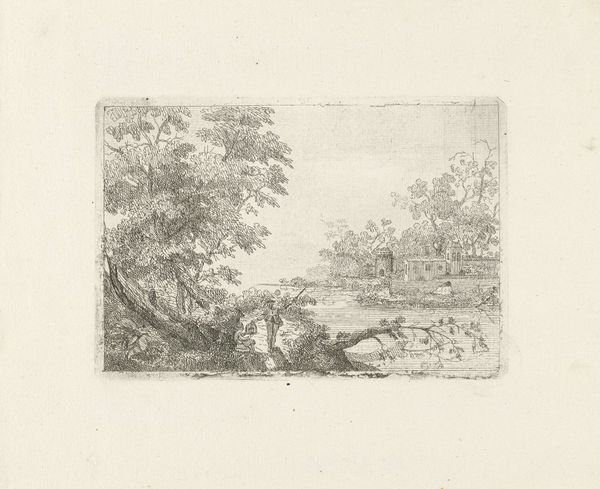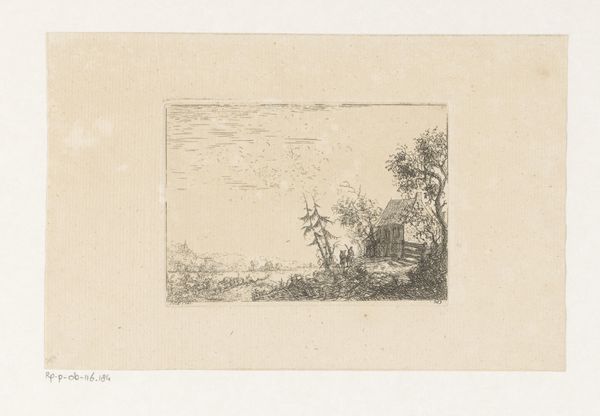
Titelpagina voor: Wilhelmus Kist 'Eduard van Eikenhorst, zijne Huisgenooten en Vrienden', 1809 1809
0:00
0:00
reiniervinkeles
Rijksmuseum
print, engraving
#
neoclacissism
# print
#
pencil sketch
#
old engraving style
#
landscape
#
pencil work
#
genre-painting
#
engraving
Dimensions: height 248 mm, width 169 mm
Copyright: Rijks Museum: Open Domain
Editor: This engraving by Reinier Vinkeles, dating back to 1809, is the title page for "Eduard van Eikenhorst, zijne Huisgenooten en Vrienden." It has such a serene feel, almost idyllic. How do you interpret this work, considering its time? Curator: Considering this print within its historical context, we see the rise of Neoclassicism intertwined with emerging bourgeois values. This “idyllic” scene reflects a desire for order, reason, and a retreat to nature, yet it also reinforces a specific, privileged vision of leisure. Who is represented here? Who *isn’t*? Editor: That’s interesting. I see a country estate, some figures strolling with dogs, others boating. What am I missing? Curator: Think about land ownership, class structures, and the very *construction* of "nature." This image isn't a neutral depiction, but a carefully curated scene that speaks to the power dynamics of the era. Who benefits from this representation? Who is excluded, whose labour is invisible in this "idyll?" Editor: So, it's less about simple beauty and more about the story it tells—or doesn't tell—about society at the time. It challenges me to question whose stories are being told in art, and from whose perspective. Curator: Exactly! By engaging with critical theory, we can unravel the power dynamics embedded within seemingly innocent landscapes, questioning whose stories are elevated and whose are erased from the artistic narrative. It encourages a much deeper, more critical reading. Editor: This has completely shifted my perspective. I will definitely look at art with new eyes now! Curator: Mine, too. Let’s continue questioning the narratives embedded within art and advocating for a more inclusive and equitable representation of society!
Comments
No comments
Be the first to comment and join the conversation on the ultimate creative platform.


